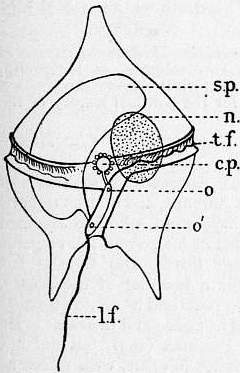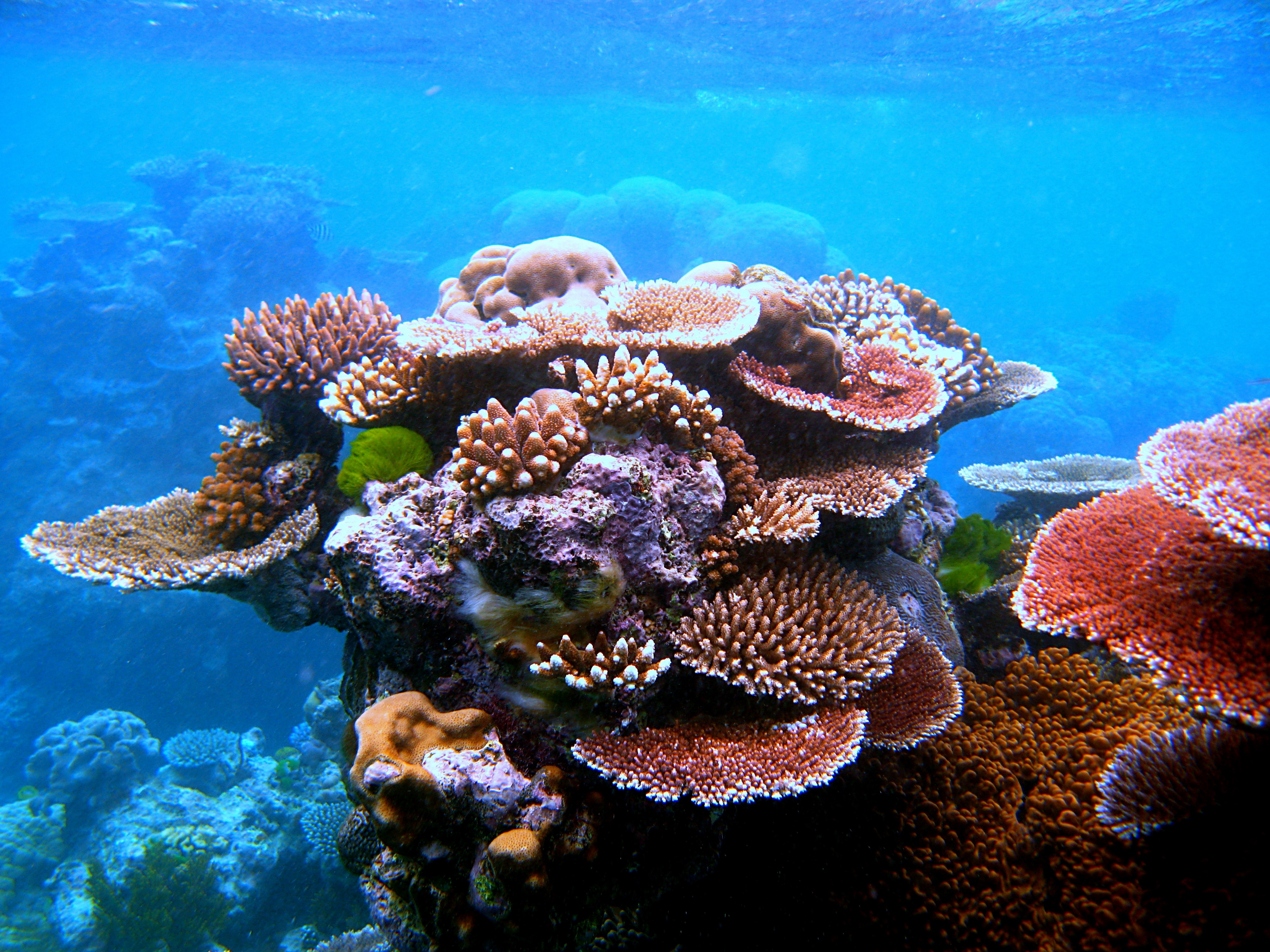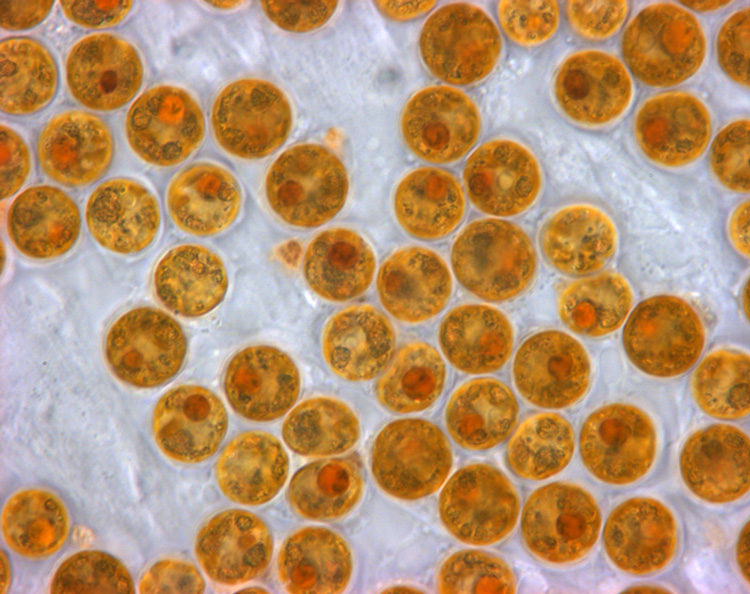|
Waminoa Litus
''Waminoa litus'' is a species of dinoflagellate-bearing acoels which are epizoic on living corals. This species is unique in that it transmits its endosymbiotic dinoflagellates (zooxanthellae Zooxanthellae is a colloquial term for single-celled dinoflagellates that are able to live in symbiosis with diverse marine invertebrates including demosponges, corals, jellyfish, and nudibranchs. Most known zooxanthellae are in the genus '' ...) vertically (from the parent host to the offspring) via eggs, regardless of the heterogeneity of the zooxanthellae. Two dinoflagellate genera have been found to simultaneously live in the parenchyma of ''W. litus'': '' Symbiodinium'' and '' Amphidinium.'' References Acoelomorphs {{Xenacoelomorpha-stub ... [...More Info...] [...Related Items...] OR: [Wikipedia] [Google] [Baidu] |
Dinoflagellate
The dinoflagellates (Greek δῖνος ''dinos'' "whirling" and Latin ''flagellum'' "whip, scourge") are a monophyletic group of single-celled eukaryotes constituting the phylum Dinoflagellata and are usually considered algae. Dinoflagellates are mostly marine plankton, but they also are common in freshwater habitats. Their populations vary with sea surface temperature, salinity, and depth. Many dinoflagellates are photosynthetic, but a large fraction of these are in fact mixotrophic, combining photosynthesis with ingestion of prey ( phagotrophy and myzocytosis). In terms of number of species, dinoflagellates are one of the largest groups of marine eukaryotes, although substantially smaller than diatoms. Some species are endosymbionts of marine animals and play an important part in the biology of coral reefs. Other dinoflagellates are unpigmented predators on other protozoa, and a few forms are parasitic (for example, '' Oodinium'' and '' Pfiesteria''). Some dinoflagell ... [...More Info...] [...Related Items...] OR: [Wikipedia] [Google] [Baidu] |
Acoela
Acoela, or the acoels, is an order of small and simple invertebrates in the subphylum Acoelomorpha of phylum Xenacoelomorpha, a deep branching bilaterian group of animals, which resemble flatworms. Historically they were treated as an order of turbellarian flatworms. The etymology of "acoel" is from the Ancient Greek words (), the '' alpha privative'', expressing negation or absence, and (), meaning "cavity". This refers to the fact that acoels have a structure lacking a fluid-filled body cavity. Description Acoels are very small flattened worms, usually under in length, but some larger species, such as ''Symsagittifera roscoffensis'', may reach up to . They are bilaterally symmetric and microscopic. They are found worldwide in marine and brackish waters, usually having a benthic lifestyle, although some species are epibionts. Two species, ''Limonoposthia polonica'' and ''Oligochoerus limnophilus'', lives in freshwater. Members of the class Acoela lack a conventi ... [...More Info...] [...Related Items...] OR: [Wikipedia] [Google] [Baidu] |
Epizoic
An epibiont (from the Ancient Greek meaning "living on top of") is an organism that lives on the surface of another living organism, called the basibiont ("living underneath"). The interaction between the two organisms is called epibiosis. An epibiont is, by definition, harmless to its host. In this sense, the interaction between the two organisms can be considered neutralistic or commensalistic; as opposed to being, for example, parasitic, in which case one organism benefits at the expense of the other, or mutualistic, in which both organisms obtain some explicit benefit from their coexistence. Examples of common epibionts are barnacles, remoras, and algae, many of which live on the surfaces of larger marine organisms such as whales, sharks, sea turtles, and mangrove trees. Although there is no direct effect of the epibiont to the host, there are often indirect effects resulting from this interaction and change in the surface of the host. This has been found to be esp ... [...More Info...] [...Related Items...] OR: [Wikipedia] [Google] [Baidu] |
Coral
Corals are marine invertebrates within the class Anthozoa of the phylum Cnidaria. They typically form compact colonies of many identical individual polyps. Coral species include the important reef builders that inhabit tropical oceans and secrete calcium carbonate to form a hard skeleton. A coral "group" is a colony of very many genetically identical polyps. Each polyp is a sac-like animal typically only a few millimeters in diameter and a few centimeters in height. A set of tentacles surround a central mouth opening. Each polyp excretes an exoskeleton near the base. Over many generations, the colony thus creates a skeleton characteristic of the species which can measure up to several meters in size. Individual colonies grow by asexual reproduction of polyps. Corals also breed sexually by spawning: polyps of the same species release gametes simultaneously overnight, often around a full moon. Fertilized eggs form planulae, a mobile early form of the coral polyp which, when matu ... [...More Info...] [...Related Items...] OR: [Wikipedia] [Google] [Baidu] |
Endosymbiont
An ''endosymbiont'' or ''endobiont'' is any organism that lives within the body or cells of another organism most often, though not always, in a mutualistic relationship. (The term endosymbiosis is from the Greek: ἔνδον ''endon'' "within", σύν ''syn'' "together" and βίωσις ''biosis'' "living".) Examples are nitrogen-fixing bacteria (called rhizobia), which live in the root nodules of legumes, single-cell algae inside reef-building corals and bacterial endosymbionts that provide essential nutrients to insects. There are two types of symbiont transmissions. In horizontal transmission, each new generation acquires free living symbionts from the environment. An example is the nitrogen-fixing bacteria in certain plant roots. Vertical transmission takes place when the symbiont is transferred directly from parent to offspring. It is also possible for both to be involved in a mixed-mode transmission, where symbionts are transferred vertically for some generation bef ... [...More Info...] [...Related Items...] OR: [Wikipedia] [Google] [Baidu] |
Zooxanthellae
Zooxanthellae is a colloquial term for single-celled dinoflagellates that are able to live in symbiosis with diverse marine invertebrates including demosponges, corals, jellyfish, and nudibranchs. Most known zooxanthellae are in the genus '' Symbiodinium'', but some are known from the genus '' Amphidinium'', and other taxa, as yet unidentified, may have similar endosymbiont affinities. The true ''Zooxanthella'' K.brandt is a mutualist of the radiolarian ''Collozoum inerme'' (Joh.Müll., 1856) and systematically placed in Peridiniales. Another group of unicellular eukaryotes that partake in similar endosymbiotic relationships in both marine and freshwater habitats are green algae zoochlorellae. Zooxanthellae are photosynthetic organisms, which contain chlorophyll a and chlorophyll c, as well as the dinoflagellate pigments peridinin and diadinoxanthin. These provide the yellowish and brownish colours typical of many of the host species. During the day, they provide their ... [...More Info...] [...Related Items...] OR: [Wikipedia] [Google] [Baidu] |
Symbiodinium
: ''This is about the genus sometimes called Zoox. For the company, see Zoox (company)'' ''Symbiodinium'' is a genus of dinoflagellates that encompasses the largest and most prevalent group of endosymbiotic dinoflagellates known. These unicellular microalgae commonly reside in the endoderm of tropical cnidarians such as corals, sea anemones, and jellyfish, where the products of their photosynthetic processing are exchanged in the host for inorganic molecules. They are also harbored by various species of demosponges, flatworms, mollusks such as the giant clams, foraminifera ( soritids), and some ciliates. Generally, these dinoflagellates enter the host cell through phagocytosis, persist as intracellular symbionts, reproduce, and disperse to the environment. The exception is in most mollusks, where these symbionts are intercellular (between the cells). Cnidarians that are associated with ''Symbiodinium'' occur mostly in warm oligotrophic (nutrient-poor), marine environments where ... [...More Info...] [...Related Items...] OR: [Wikipedia] [Google] [Baidu] |
Amphidinium
''Amphidinium'' is a genus of dinoflagellates. The type for the genus is ''Amphidinium operculatum'' Claparède & Lachmann. The genus includes the species ''Amphidinium carterae'' which is used as a model organism. As dinoflagellates, ''Amphidinium'' spp. have chloroplasts. The ''Amphidinium'' chloroplast genome is unusual in not having a single contiguous circular genome. Instead, chloroplast genes encoded in chloroplast DNA are found on numerous 2-3 kbp minicircles, analogous to plasmids. Most minicircles have only a few protein-coding genes; many have just a single gene. There are reports of minicircles that do not have known transcripts, like in the ''Amphidinium carterae'' chloroplast genome, although these were not found in the ''Symbiodinium'' sp. Clade C3 chloroplast genome. Minicircle-derived transcripts can be processed in ways not typical of eukaryotes, including the addition of a 3' poly(U) tail, as opposed to the typical poly(A) tail derived from polyadenylation of ... [...More Info...] [...Related Items...] OR: [Wikipedia] [Google] [Baidu] |




